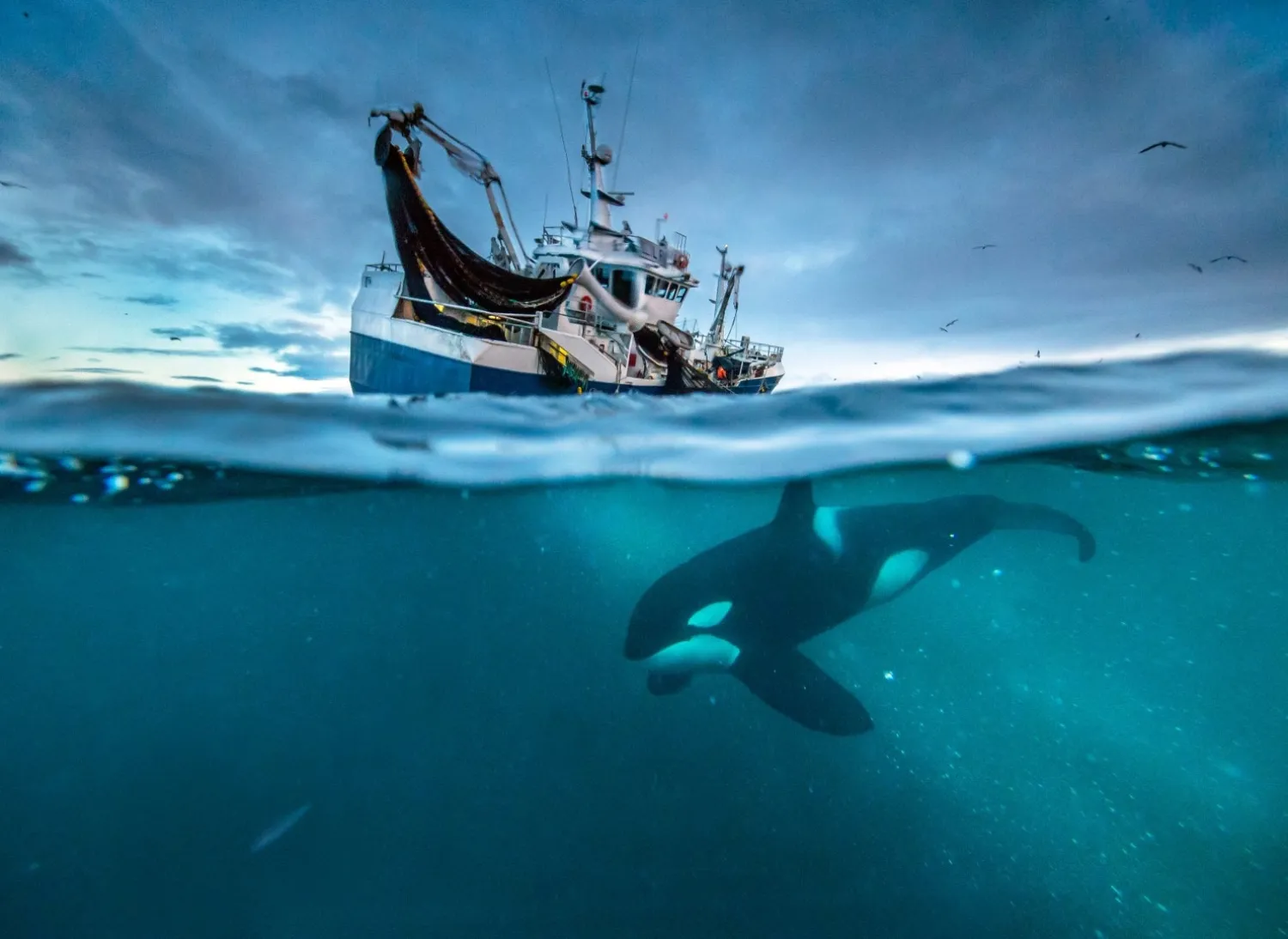The most-watched television program in Britain last year was not a singing competition, a period costume drama or even a baking show. It was a nature program about gender-bending fish and dolphins that like to surf.
The seven-part BBC documentary, presented by a beloved nonagenarian naturalist, was not unalloyed entertainment, though. It also zeroed in on the disastrous impact of plastic waste in the world’s oceans, spurring government ministers to vow remedial action.
“Blue Planet II” enthralled British viewers, who lit up social media on Sunday nights with their favorite moments from the latest episode. The sumptuously shot series, which begins airing on BBC America on Jan. 20, took four years to make, with filmmakers traveling to every continent and every ocean.
It could be that “the moment is right” for a documentary on the state of the oceans, said Sir David Attenborough, the show’s human star, in a recent interview at the BBC’s gleaming offices in central London. “There are people worldwide talking about what we are doing about the seas.”
It also could be that the grandfatherly Attenborough is just the right man to deliver the message. At 91, he is a British national treasure — something like Jacques Cousteau, Carl Sagan and Jane Goodall rolled into one.
In person, Attenborough, who was knighted in 1985 and is called “Sir David” by BBC colleagues, is a master storyteller. He has a shock of white hair and bright blue eyes, and he speaks with the same distinctive cadence and whispered confidences — whether about leaking submersibles or wondrous salamanders — that have entranced British viewers for decades.
He is also a born broadcaster, his velvety voice propelling footage of tool-using tusk fish and giant trevally fish that catch birds in midair.
Some of Attenborough’s previous programs have drawn criticism for pulling punches about human threats to the environment. Martin Hughes-Games, a fellow BBC producer, has argued that in one series, the footage was so jaw-dropping that it lulled viewers into a “false sense of security.”
“Blue Planet II,” a sequel to a 2001 series about marine life, is different. It features fish with transparent heads and a nail-
biting chase scene involving a crab, eel and octopus that will make you think twice about your next frolic in shallow seas. But it also directly addresses plastic pollution, overfishing and climate change.
Attenborough insists that the BBC did not set out to make an “ax-grinding program.” But, he added, “If you come across the situation that we have come across, you can’t just say, ‘Well, we don’t like that because it’s an uncomfortable or awkward truth.’ ”
That hard-hitting approach appears to have struck a chord in Britain, where several media outlets are running campaigns aimed at reducing marine plastic pollution — an estimated 9 million tons of plastic ends up in the sea each year. The issue also has risen to the top of the global agenda. In December, 193 nations signed a U.N. resolution pledging to stop plastic waste from entering the sea.
Michael Gove, Britain’s environment secretary, said that he was “haunted” by “Blue Planet II” and that his department is looking at the possibilities of “bottle deposit return schemes, greater access to water fountains and incentives to encourage reusable coffee cups.” Britain recycles less plastic than many other European countries, including Norway and Germany.
Attenborough, who says he personally has swapped out plastic water bottles for a Thermos, is optimistic that a solution to the plastics problem can be found. “If we are clever enough to be able to invent it, surely we should be clever enough to be able to think of ways of destroying it,” he said.
If part of the solution, as the series implies, is for a concerted global effort, what does Attenborough make of President Trump’s decision to pull out of the Paris climate agreement?
“It would be absurd to say it didn’t have an impact,” he said. “It’s the most powerful nation on Earth, so of course it matters a lot.”
But at the same time, he said, “it is against the tide of human interests. I mean, China, for heaven’s sake — India is behind it. The world is becoming aware of this.”
“Blue Planet II” was also a hit with critics, who have called it “astonishing,” “awe-inspiring” and “playing a different sport from most of what makes it onto our screens.”
Attenborough has worked at the BBC since 1950, including eight years as controller of BBC Two. Although he brushes off the suggestion that he is a national treasure — “Who says? I mean, it isn’t voted for,” he said — it is a fact that he has played a formidable role in encouraging audiences worldwide to care about the natural world. (It is also a fact that people do vote for Attenborough: When Britons were recently asked which “ethical champion” they would like to see featured on the new 20-pound note, his name came out on top.)
As a young boy, he collected fossils and later studied zoology at Cambridge University. He joined the BBC when he was 24, although his first appearance on television was not an overwhelming success.
In his memoir, “Life on Air,” the veteran broadcaster recalled discovering a note a producer wrote after his debut saying that Attenborough was “intelligent and promising” but not to be used again on air because “his teeth are too big.”
He went on to write and present numerous award-winning natural history documentaries, along the way inspiring generations of science lovers and wildlife filmmakers — including James Honeyborne, executive producer of “Blue Planet II.”
Honeyborne, who has worked with Attenborough for 25 years, describes the latter’s working style as “very exact and very scientifically accurate, but he also wants to tell you a story, so he will put it into words that really help that storytelling experience.
“The audience over here finds it very engaging,” he said.
Attenborough no longer accompanies every shoot in the field. In “Blue Planet II,” he appears on screen in only two episodes, including an introduction shot on the bow of a ship off Florida — he jokingly called it his “Titanic” scene. For the commentary, recorded in studios in Britain, he was given the film and a script, which he then rewrote in his own words.
Attenborough lives in Richmond, a leafy London suburb, with his daughter, Susan; his wife, Jane, died in 1997. He has a slight hobble in his gait but continues to travel the globe for work and says he has no plans to retire.
“Why? I’m having fun; I’m having a great time. It’s a fantastic privilege,” he said.
He also is enjoying something of a moment, being at the crest of a wave.
“Some of us have been going on, saying it’s criminal the way we have been treating the oceans. We have been bleating on about this for a decade with no effect,” he said.
“But it has a cumulative effect,” he said, “and this is the moment that is the payoff.”
The Washington Post









